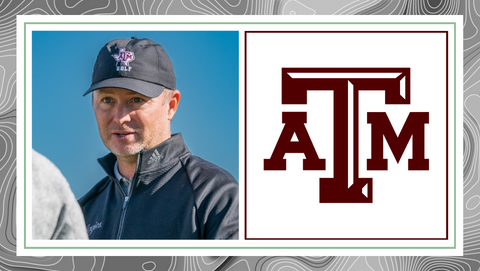Quoted in this post

Gerrod Chadwell | Texas A&M
Golf fitness within collegiate programs has advanced light-years in the past two decades. At most universities, gone are the days of women’s golf teams running and weight training alongside men’s basketball squads or male golfers grinding like powerlifters. Many of today’s fitness plans for collegiate golfers are research-based and custom designed for the individual athlete.
This all begs the question, though, how prepared and how fit does an elite high school golfer need to be to hit the ground running at the next level?
Texas A&M Head Women’s Golf Coach Gerrod Chadwell runs a program that has access to world-class strength and conditioning, science-based nutrition plans, plus top-tier recovery and physical therapy amenities, but his approach to preparing golfers for the repeated rigors of tournament play is still pretty simple.
“Something juniors can do in their workouts is to protect the parts of bodies that get overuse injuries in the golf swing, like the rotator cuff, the back, and keeping your hips and core really mobile. I wouldn’t want them lifting a ton of weight unless they’re doing it with a specific goal and under some supervision,” Chadwell advises. “I love dual sport athletes. A kid who’s a basketball player, cross country athlete, whatever, because I love that cross training. When you do then get sport specific, I think your body’s ready for whatever we might introduce in the gym.”
“I love dual sport athletes. A kid who’s a basketball player, cross country athlete, whatever, because I love that cross training.”
He adds that his team works out together one to three times per week, depending on schedules and travel, but many of the players are self-motivated in their personal workouts. “Our players are great about at least getting in some regular cardio and mobility stretching. Even when traveling, they make pretty good use of a hotel gym. I would say that’s one of the key reasons we’re playing really good golf right now. They’re durable in their bodies and can do what they need to do on the course repeatably.”
Chadwell subscribes to the philosophy that golfers should train specifically for golf. “Our team focuses on bodyweight workouts and we’re doing a lot of mobility work to optimize their golf performance. As far as weight training, when they’re on the squat rack, it’s not much more weight than the bar. We’re trying to make them more durable and we’re trying to create some speed, but the durability and resistance to any golf-related injuries is a huge key for our team,” he says. “Nutrition education and habits go hand-in-hand with peak athletic performance. Even things as simple as having snacks in your golf bag to sustain that energy level and focus during long rounds are just as important as being strong and flexible.”
“Nutrition education and habits go hand-in-hand with peak athletic performance.”
If this sounds daunting, Chadwell says not to worry. Today’s collegiate golf programs are built to meet athletes where they are in their development and to do everything they can to optimize their fitness and nutrition for peak golf performance.
“We don’t expect incoming freshmen to come in being total experts on fitness. Fortunately, here, we have world-class strength and conditioning support led by Bo Sandoval who has a deep background in the UFC and Olympic sports training. We’re going to get our athletes into good fitness and nutrition habits of staying safe, staying mobile, and staying active while putting the right fuel for energy in their bodies,” Chadwell says. “I do notice that, increasingly, the young athletes who come to us from foreign countries, those federations are making fitness a priority as they develop juniors from a young age. Homeschooled kids seem to also have an advantage in managing their time and getting into the gym.”
Fitness can bring young golfers a competitive edge, but it’s crucial that workout and nutrition plans are designed for the specific golfer’s body and goals. Take it from Chadwell: “Mobility and durability – being strong in the muscles that get the most wear and tear from golf – along with optimal nutrition can help take you far in this game, and in life.”
